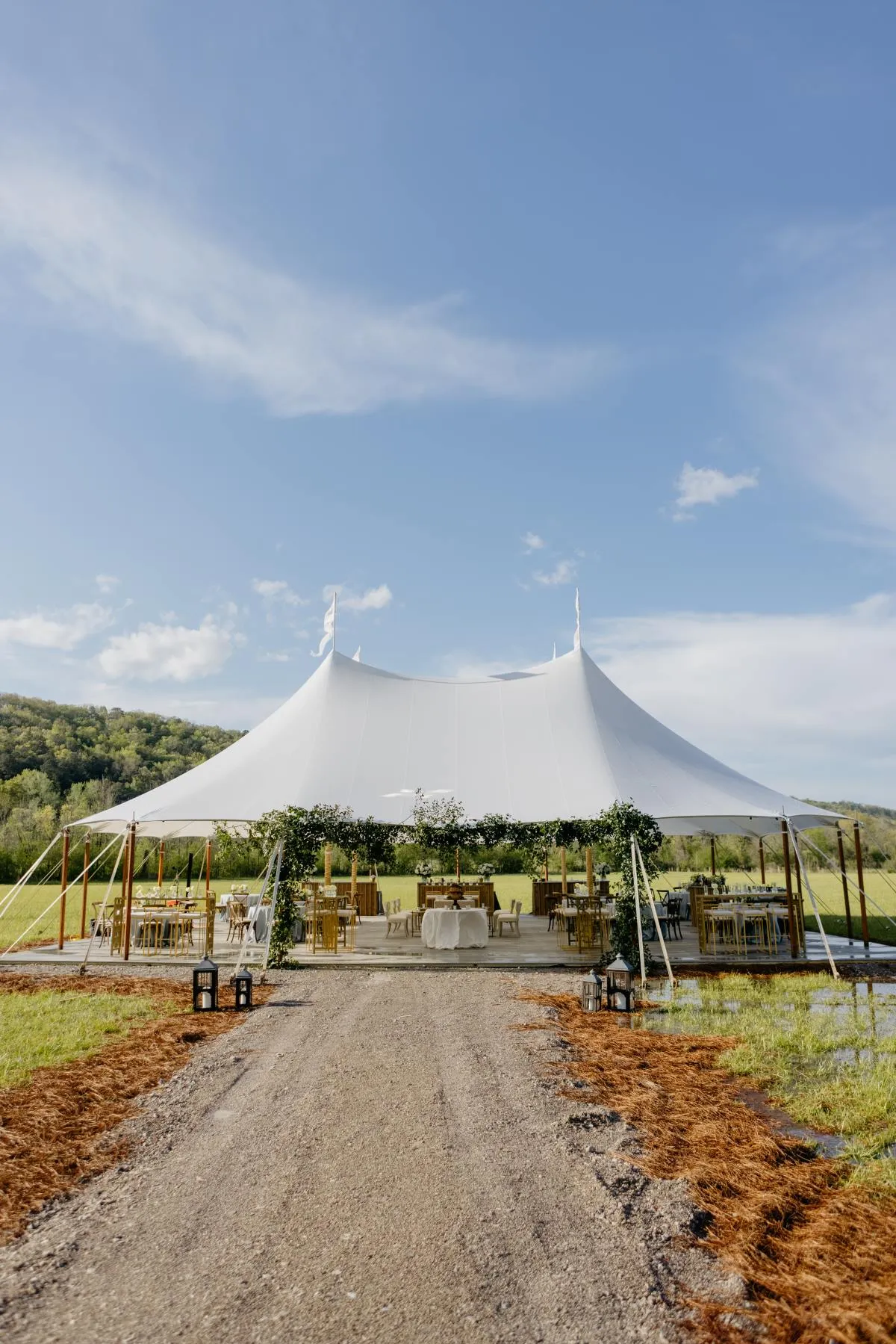The success of a luxury tented event begins with choosing the right location. The venue not only sets the stage for your design vision but also determines how smoothly logistics, comfort, and guest experience come together. From evaluating terrain and accessibility to planning utilities and securing permits, careful preparation ensures a flawless foundation. With the right site strategy, a tented event can be transformed into a sophisticated space that feels both seamless and unforgettable.
Key Takeaways
- Utilities are the foundation of guest comfort and smooth event operations.
- Reliable power systems support lighting, AV, and catering without interruptions.
- Water and waste management must be planned carefully to keep the venue clean and functional.
- Climate-controlled restroom trailers with upscale finishes elevate guest experience.
- ADA-accessible facilities ensure inclusivity and align with luxury event standards.
- Well-managed infrastructure preserves both safety and sophistication at high-end tented events.
Key Terrain and Ground Conditions for Your Luxury Tent Event
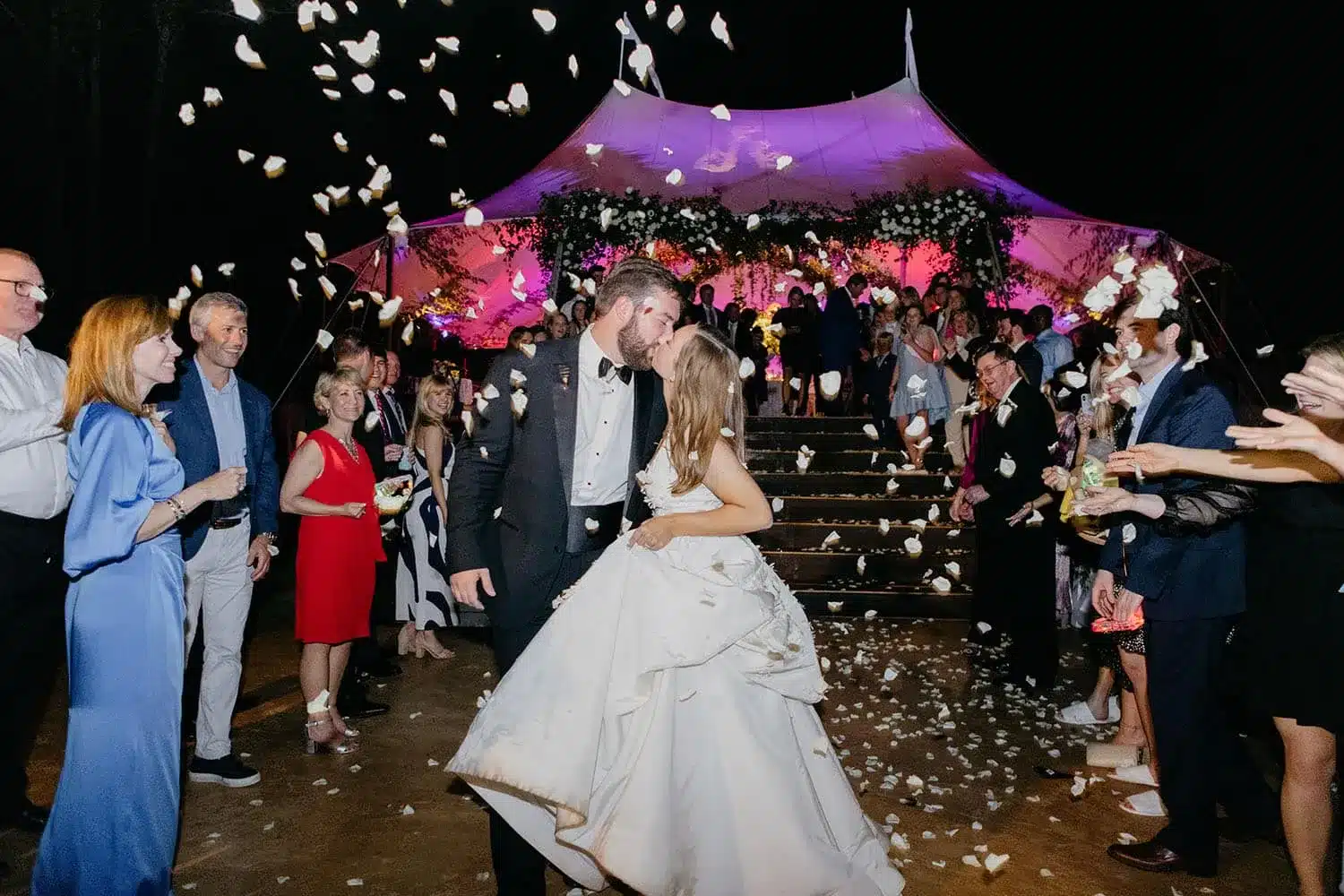
The nature of the ground directly impacts tent stability, visual appeal, and guest comfort by influencing foundation security, water management, and anchoring effectiveness. A thorough evaluation of flatness and ground stability is crucial to prevent uneven flooring, water accumulation, and potential structural risks.
When assessing site suitability, pay close attention to:
- The levelness and grading of the terrain
- The composition and load-bearing strength of the soil
- Natural drainage patterns and strategies for managing runoff
- The presence of underground utilities and hidden obstructions
Addressing these elements ensures a stable, level foundation, enhancing both the safety and visual impact of your tent, while minimizing the need for costly on-site adjustments.
Why Are Flatness and Stability Paramount for Tent Installation?
Level, stable ground is essential for preventing foundation shifts and ensuring perfectly even flooring beneath your luxury tent, facilitating uniform load distribution and secure anchoring.
- Even weight distribution minimizes stress on tent poles and connection points.
- Consistent ground contact preserves the flawless appearance of flooring and décor.
- A stable surface reduces tent movement in windy conditions, enhancing guest comfort.
- Properly graded sites direct water runoff effectively away from gathering areas.
Addressing ground flatness early in the planning process saves valuable time on site preparation and maintains the impeccable aesthetic of high-end installations.
How Do Different Ground Surfaces Impact Luxury Tent Placement?
The type of ground surface dictates the appropriate tent anchoring techniques, necessary flooring systems, and even the most suitable tent styles. Here’s a comparison of common surfaces and their compatibility:
Understanding these surface-specific requirements streamlines your planning and prevents last-minute changes that could compromise your event’s luxurious standards.
Essential Site Preparation Steps for a Robust Tent Foundation
Thorough site preparation establishes a dependable base for your tent installation by addressing potential obstacles, ensuring proper grading, and implementing secure anchoring solutions. Key steps include:
- Clearing the designated area of all vegetation, debris, and rocks.
- Precisely grading and leveling the site, ideally using professional grading tools.
- Installing appropriate ground anchors, soil spikes, or ballast systems based on the surface type.
- Conducting a final pre-installation site visit for precise measurements and feasibility confirmation.
Meticulous preparation ensures structural integrity, expedites the setup process, and upholds the polished appearance expected at sophisticated events.
The Role of Accessibility and Logistics in Outdoor Venue Selection
Accessibility and logistical considerations are fundamental to the feasibility of transporting equipment, furniture, catering supplies, and guest vehicles to your chosen site. Evaluating road conditions, entry points, and designated staging areas is vital for minimizing setup delays and ensuring seamless coordination with all vendors, ultimately contributing to a smooth event flow.
Critical logistical factors to consider include:
- Ease of access from main roads for large delivery trucks and tent trailers
- Clearly defined routes and dedicated loading zones for vendors
- Sufficient on-site parking for both guests and essential service vehicles
- Adequate pathway widths and surface integrity for safe equipment movement
Prioritizing accessibility fosters a secure and efficient environment, supporting the flawless execution of upscale tent installations and premium guest experiences.
Best Practices for Venue Accessibility for All Attendees and Vendors
- Ensure paved or stabilized pathways lead directly to the tent entrance.
- Designate specific loading zones conveniently located near service entrances.
- Provide ADA-compliant parking spaces within 100 feet of primary access points.
- Utilize clear directional signage and ample lighting to guide guests and vendors after sunset.
Well-defined access routes reduce stress, promote timely arrivals, and reinforce the sophisticated image of your event.
How Vendor and Equipment Access Impacts Tent Setup Efficiency
Streamlined vendor access directly influences the speed and precision of tent erection, décor installation, and catering setup by:
- Allowing heavy equipment to reach the installation site without causing ground damage.
- Minimizing handling time for crucial elements like flooring, staging, and climate control systems.
- Facilitating optimal placement of backup generators and lighting equipment.
- Preventing schedule slippage that can occur from repeated transport across challenging terrain.
A meticulously planned logistics strategy ensures all components arrive punctually and helps maintain the luxurious atmosphere throughout the event.
Essential Utilities and Infrastructure for Your Luxury Tent Event
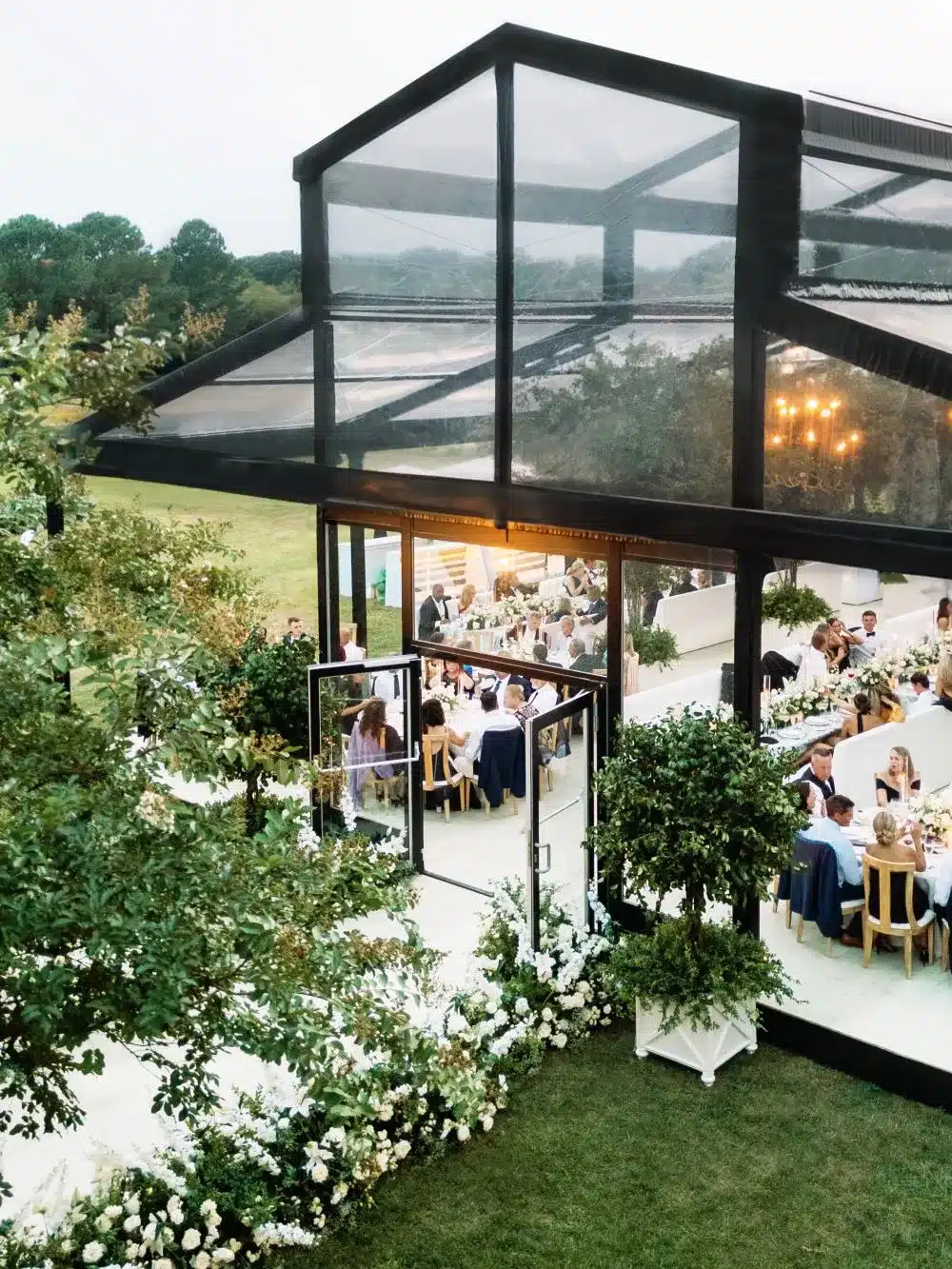
Reliable utilities form the foundation of a successful tented event, ensuring comfort, safety, and uninterrupted service. From lighting and climate control to catering and restrooms, well-planned infrastructure allows every detail of the celebration to run seamlessly.
Core infrastructure considerations include:
- Adequate power generation and safe distribution for lighting, AV, and catering equipment
- Access to clean water and efficient systems for waste management
- Climate-controlled restroom trailers with high-end finishes
- Communication lines to support audiovisual production and internet needs
With these essentials in place, luxury tent events deliver both flawless execution and an elevated guest experience.
Managing Power and Electrical Needs for Tented Events
Power planning is critical to ensure reliability throughout the event. Generators should be sized with ample capacity beyond peak load, with distribution panels placed near service areas for efficiency. Cable ramps keep cords organized and out of walkways, while surge protection safeguards equipment. When managed professionally, power systems prevent interruptions and support even the most advanced lighting and AV designs.
Water and Waste Management Solutions for Outdoor Venues
Thoughtful water and waste planning preserves comfort and maintains a polished environment. Mobile water tanks or municipal connections provide reliable access, while temporary gray-water systems with filtration manage disposal cleanly. Coordinated hauling services ensure waste is removed promptly, keeping the venue pristine and aligned with luxury standards.
Restroom Options to Elevate Guest Comfort
High-end restroom facilities are a hallmark of luxury outdoor events. Climate-controlled restroom trailers with running water and flushing toilets provide comfort comparable to indoor venues. Finishes such as wood flooring, elegant fixtures, and ambient lighting elevate the design, while ADA-accessible units ensure inclusivity. Selecting refined restroom options enhances both guest satisfaction and the overall sophistication of the event.
Navigating Permits, Regulations, and Safety for Luxury Tent Venues
Obtaining the necessary permits and adhering to stringent safety standards are critical for protecting your guests and avoiding potential legal complications. Luxury tent events are typically subject to temporary structure regulations, fire codes, and local zoning ordinances that govern installation, occupancy limits, and emergency procedures.
Essential compliance steps include:
- Securing building and fire department permits for tent dimensions and expected occupancy.
- Obtaining health department approvals if on-site food service is planned.
- Complying with local noise ordinances and event duration restrictions.
- Implementing certified fire suppression systems and clearly marked emergency exit routes.
Typical Permits Required for Large Outdoor Tent Events
- Building permit for temporary structures exceeding a defined square footage threshold.
- Fire safety permit covering the use of flame-resistant materials and required suppression equipment.
- Special event permit addressing crowd management and site usage regulations.
- Health permit for any food and beverage operations conducted within tented areas.
Proactively securing these permits prevents last-minute disruptions and ensures your event operates in full compliance, maintaining its high-end status.
Addressing Safety Considerations in Luxury Tent Installations
- Utilize engineered anchoring systems specifically rated for local wind conditions.
- Incorporate non-slip flooring materials and stable platforms at all entry points.
- Strategically position fire extinguishers and essential life safety signage.
- Ensure staff are trained on emergency evacuation procedures and actively monitor weather advisories.
Comprehensive safety planning builds confidence, minimizes potential risks, and upholds the prestige of your occasion.
Effective Weather Contingency Plans for Tent Events
- Install reinforced wind bracing and protective sidewalls designed for high-velocity weather events.
- Have rapid-deployment covers and tarpaulins ready for sudden rainfall.
- Continuously monitor real-time weather forecasts and be prepared to relocate critical equipment off-site if necessary.
- Secure backup indoor venues or arrange for marquee extensions to accommodate extreme weather conditions.
A well-defined contingency strategy guarantees that your luxury event proceeds without interruption, regardless of unforeseen weather shifts.
Elevating the Guest Experience Through Tent Features and Venue Choice
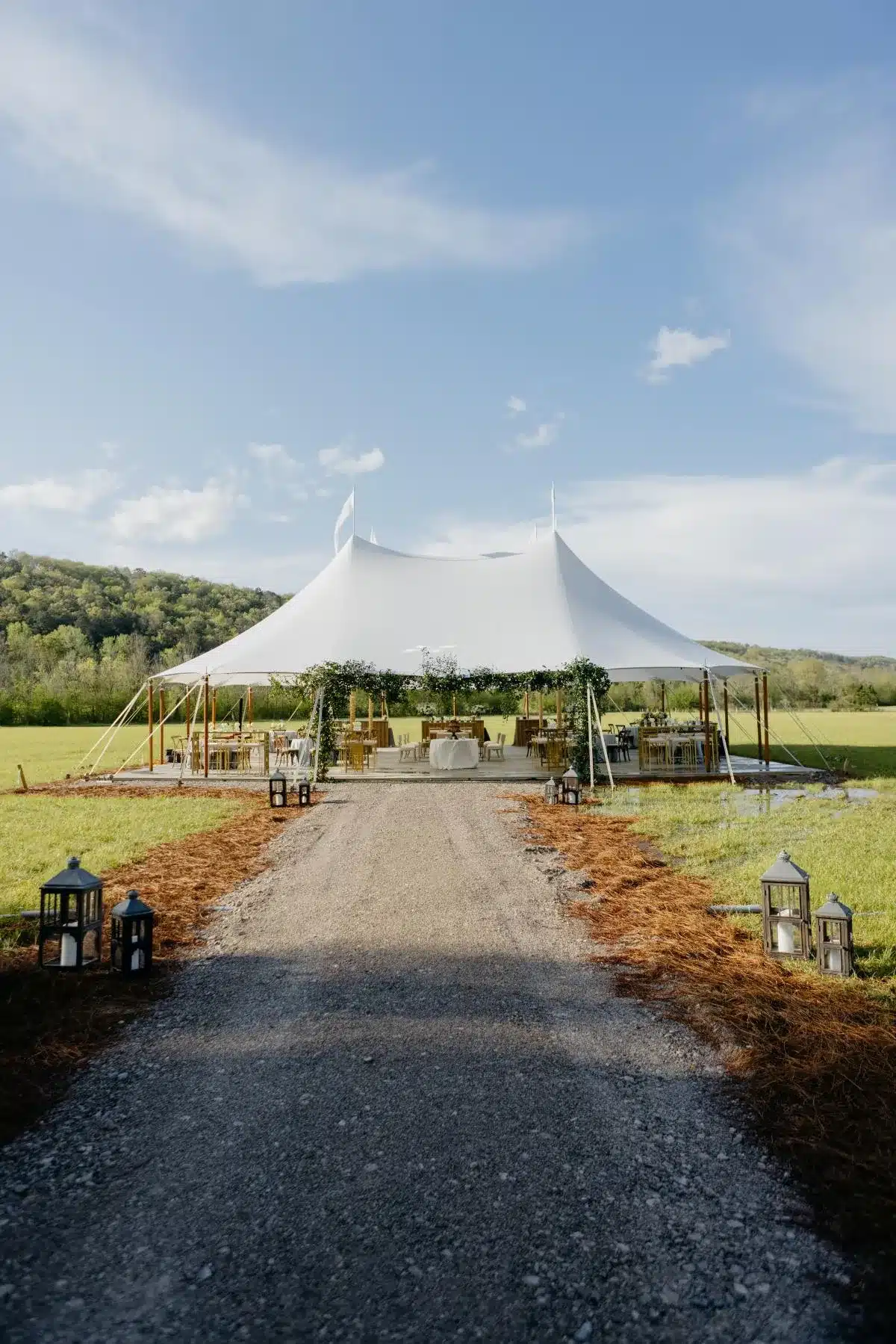
Guest satisfaction is intrinsically linked to the seamless integration of tent amenities and site characteristics that foster comfort, enhance ambiance, and ensure aesthetic harmony. Selecting the optimal combination of climate control, flooring, and décor elements refines every detail, reinforcing the sophisticated nature of your event.
Key strategies for enhancing the guest experience include:
- Implementing HVAC systems precisely calibrated for seasonal requirements
- Choosing premium flooring that offers both stability and visual elegance
- Curating layered lighting designs and bespoke decorative accents
Climate Control Options for Luxury Tents
- Integrate climate-controlled HVAC units directly with tent ceiling plenums.
- Utilize portable radiant heaters for maintaining warmth during cooler evenings, especially in transparent tents.
- Employ misting fans and dehumidifiers to ensure comfort in hot and humid climates.
- Install insulated liners and sidewalls to help regulate and stabilize interior temperatures.
Effective temperature management transforms any tent into a perfectly controlled environment, ensuring guest comfort in all conditions.
How Flooring Choices Impact Comfort and Aesthetics at Tent Events
Investing in superior flooring solutions significantly enhances both safety and visual appeal by providing:
High-quality flooring establishes a stable foundation while reinforcing your event’s upscale design vision.
Lighting and Décor Elements to Enhance Luxury Tent Ambiance
- Install chandeliers and pendant lights to draw attention to central focal points.
- Use uplighting against tent walls to cast elegant washes of color across fabric surfaces.
- Incorporate draped textiles and floral arrangements to soften structural lines and add visual interest.
- Integrate smart lighting controls for effortless transitions between different lighting scenes.
Thoughtfully chosen lighting and décor can transform a tent into a truly immersive and luxurious environment.
Space and Layout Requirements for Luxury Tent Event Venues
Effective space planning is crucial for ensuring comfortable guest flow, efficient service areas, and overall aesthetic balance. By carefully allocating square footage per person and accounting for furniture, staging, and service zones, planners can create functional layouts that support smooth operations and maintain an elegant presentation.
Essential layout considerations include:
- Guest seating density and the width of circulation aisles
- Sufficient space for staging, dance floors, and catering setups
- Clearly defined emergency egress pathways and designated ADA zones
- Seamless integration of luxurious lounge areas and bar stations
Optimized spatial design maximizes the potential of your venue and sustains a refined event flow.
Recommended Space Allocation Per Guest in Luxury Tent Settings
For luxury events, allocating approximately 12–15 square feet per guest is standard practice, allowing ample room for seating, décor, and comfortable circulation. This generous allocation:
- Ensures spacious aisle widths and encourages social interaction.
- Provides adequate space for sophisticated furniture arrangements and lounge zones.
- Accommodates service staff and carts without creating congestion.
- Meets safety regulations by maintaining unobstructed egress routes.
Generous spacing is key to preserving the refined atmosphere expected at upscale gatherings.
How Tent Style Influences Venue Layout and Capacity
- Frame tents provide expansive, unobstructed interiors ideal for flexible floor plans.
- Pole tents feature central poles that require strategic placement of furniture and décor.
- Clear-span structures eliminate interior supports, maximizing usable space and visual continuity.
- Sailcloth tents offer graceful, organic curves that influence guest sightlines and decorative draping possibilities.
Selecting the appropriate tent style ensures the spatial layout aligns perfectly with your event’s scale and design aspirations.
Best Practices for Planning Tent and Activity Area Layouts
- Position dining tables to elegantly frame the dance floor, facilitating smooth transitions.
- Locate bar stations near secondary entrances to minimize guest congestion in main areas.
- Designate discreet backstage or vendor corridors, potentially concealed by service curtains.
- Incorporate intimate lounge alcoves, subtly defined, to encourage conversation and relaxation.
Strategic zoning promotes intuitive navigation and enhances the overall sophistication of the event experience.
Distinguishing Venue Location Factors for Corporate vs. Wedding Luxury Tent Events
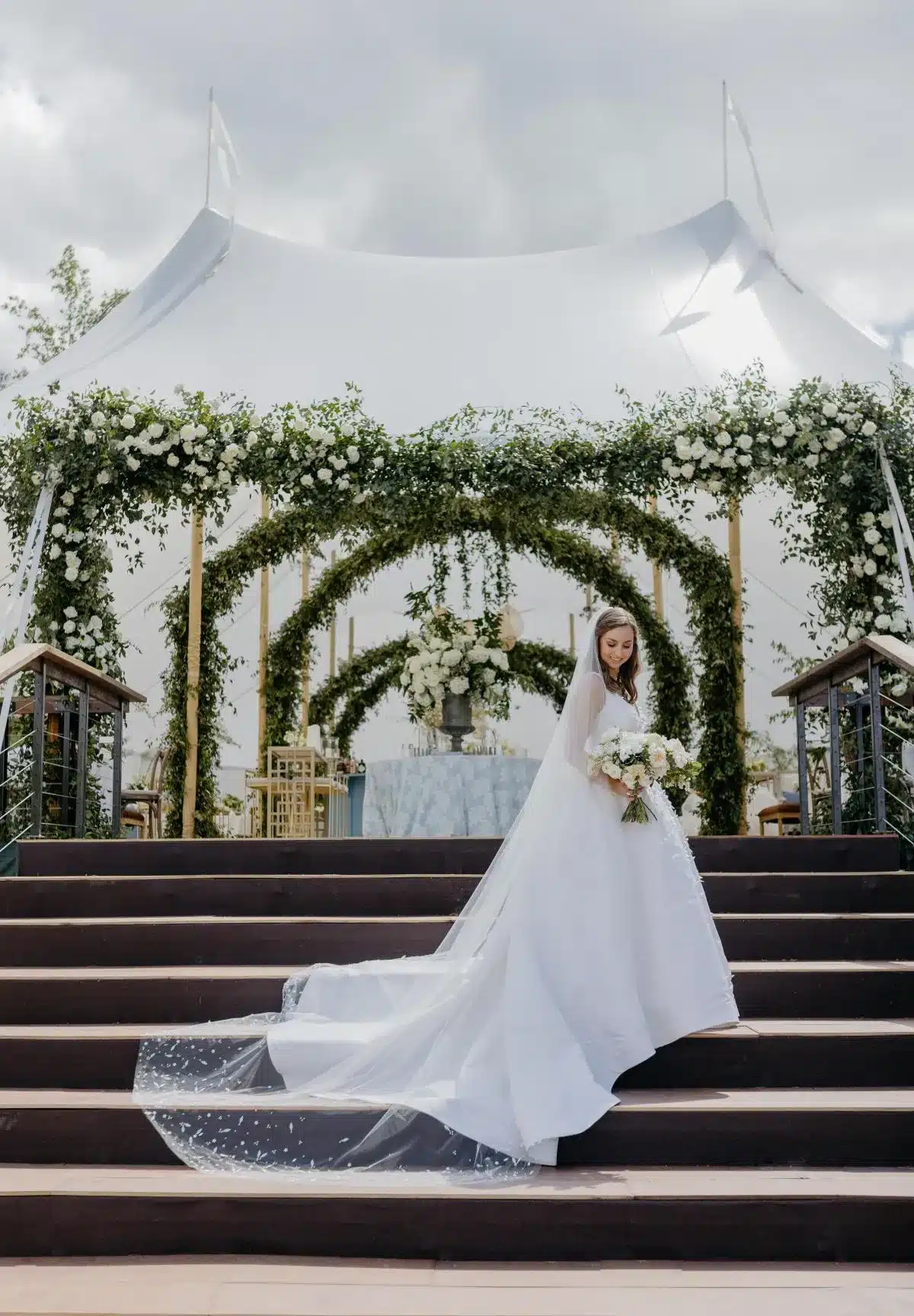
Corporate and wedding events present unique venue requirements influenced by branding objectives, guest expectations, and specific logistical needs. Weddings often prioritize picturesque settings and intimate guest experiences, while corporate events typically focus on robust audiovisual capabilities and effective networking environments.
Key distinctions include:
- The integration of branded signage and digital displays for corporate identity
- A preference for stunning scenic vistas and dedicated ceremony spaces for weddings
- Catering logistics, often involving plated service for weddings versus buffet stations for corporate functions
- The emphasis on networking lounge configurations versus prominent dance floor areas
Understanding these nuances is essential for conducting tailored site assessments and selecting the most appropriate tent solutions.
Unique Venue Considerations for Corporate Tent Events
- Ensure dependable high-speed internet connectivity and readily available AV rigging points.
- Allocate dedicated breakout spaces, potentially using tent partitions, for private meetings.
- Provide ample registration areas and sophisticated lounge spaces for brand activations.
- Incorporate modular staging suitable for presentations and product demonstrations.
These elements are crucial for projecting a polished corporate image and facilitating seamless professional interactions.
How Wedding Tent Site Requirements Differ from Other Events
- Select sites offering captivating scenic views or historic architectural elements that serve as natural décor.
- Design ceremony aisles that align with optimal natural light angles.
- Position floral arches and key focal points to maximize photographic opportunities.
- Arrange for bridal suites and groom’s lounges to be conveniently located near the main tent area.
Personalized site selections contribute significantly to creating an unforgettable and romantic atmosphere.
Supporting Event Personalization and Branding Through Venue Selection
- Align tent style and fabric colors with the corporate brand palette or wedding theme.
- Integrate site-specific branding elements, such as custom monogram projections.
- Leverage unique landscape features—like gardens or waterfronts—as immersive experiential backdrops.
- Choose tents with adaptable layouts that accommodate strategic logo placement and thematic zones.
Thoughtful venue alignment amplifies the event’s narrative and strengthens brand resonance.
Conclusion
Executing a successful luxury tent event requires meticulous site analysis, robust infrastructure planning, and a keen design alignment with guest expectations. By prioritizing terrain stability, accessibility, essential utilities, regulatory compliance, and atmospheric elements, planners can ensure flawless installations and create truly memorable experiences. For expert advice on selecting the ideal venue, preparing the site, and customizing a luxury tent solution that exceeds expectations, we invite you to request a personalized consultation with our specialists at Skyline Tent.

